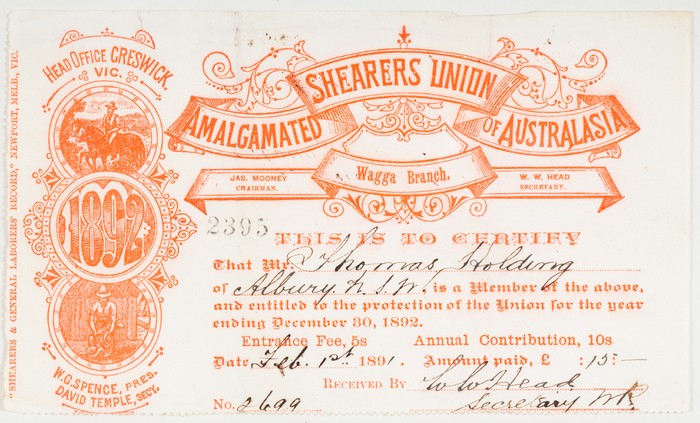
Union Ticket
1891-92
Printed ephemera
Bequest of Sir William Dixson, 1952
DN / P 631
Printed ephemera
Bequest of Sir William Dixson, 1952
DN / P 631
Through the 19th century, the conditions under which shearers worked were notoriously bad, with low wages often compounded by poor accommodation and rations. The Amalgamated Shearers’ Union was formed in 1887, and over the next few years won some improvements for members.
By the early 1890s relations between the shearers and pastoralists were becoming increasingly bitter. Drought, the introduction of mechanical shears and confrontations between unions, pastoralists and shearers culminated in strikes in Queensland and NSW, supported by maritime workers who refused to handle ‘black’ wool – wool harvested using non-union, or ‘scab, labour.
Thomas Holding may well have needed ‘the protection of the Union’ at this time. Depicting a figure mounted on horseback and a shearer at his stand in the shearing shed, his ticket is quite ornate. The text down the perforated left-hand edge, ‘Shearers & General Labourers’ Record’, refers to the newspaper of the shearers’ union. Like many union newspapers of today, the shearers’ paper included imagery, songs, poems and games designed to increase awareness, pride, loyalty and camaraderie among shearers and their labour struggle.


 Back to list
Back to list